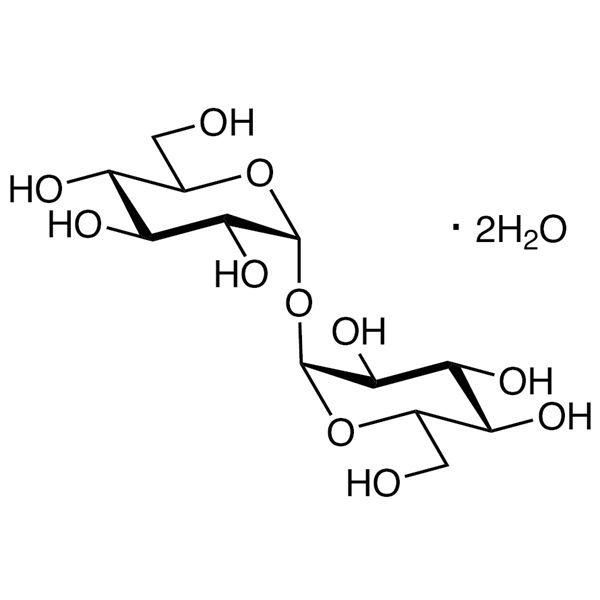D-(+)-Trehalose Dihydrate CAS 6138-23-4 Assay >99.0% (HPLC) Factory
Ruifu Chemical is the leading manufacturer of D-(+)-Trehalose Dihydrate (CAS: 6138-23-4) with high quality, can be used as food additives sweetener flavour enhancer, pharmaceutical excipient, cosmetics raw material. Ruifu Chemical has 15 years experience in carbohydrate chemistry. Our R&D center is located in Shanghai and has two factories in China. Ruifu Chemical can provide worldwide delivery, competitive price, excellent service, small and bulk quantities available. Purchase D-(+)-Trehalose Dihydrate, Please contact: alvin@ruifuchem.com
| Chemical Name | D-(+)-Trehalose Dihydrate |
| Synonyms | D-Trehalose Dihydrate; α,α-Trehalose Dihydrate; alpha-D-Glucopyranosyl-alpha-D-Glucopyranoside; α-D-Glucopyranosyl-α-D-Glucopyranoside |
| Stock Status | In Stock, Commercial Production |
| Dihydrate CAS Number | 6138-23-4 |
| Anhydrous CAS Number | 99-20-7 |
| Molecular Formula | C12H22O11·2H2O |
| Molecular Weight | 378.33 g/mol (342.30 Anhydrous) |
| Melting Point | 97.0~99.0℃(lit.) |
| Density | 1.76g/cm3 |
| Store Under Inert Gas | Store Under Inert Gas |
| Sensitive | Hygroscopic |
| Solubility | Soluble in Water, Almost Transparency. Insoluble in Ether |
| COA & MSDS | Available |
| Origin of Product | Shanghai, China |
| Shelf Life | 2 Years When Properly Stored |
| Brand | Ruifu Chemical |
| Items | Specifications | Results |
| Appearance | White Crystalline Powder | White Crystalline Powder |
| Solubility | Soluble in Water, Insoluble in Ether | Complies |
| Solubility in H2O | Clear Colorless, 50mg/ml of Water | Pass |
| Identification | IR and TLC | Complies |
| MS and NMR | Should Comply | Complies |
| Melting Point | 97.0~99.0℃ | 97.0~99.0℃ |
| Specific Rotation [α]20/D | +178.0° ~ +183.0° (C=7 in H2O) | +181.2° |
| Water by Karl Fischer | 9.2~10.2% | Complies |
| Residue on Ignition | <0.20% | 0.015% |
| TLC | Should be One Spot | One Spot |
| Heavy Metals (Pb) | <10ppm | <10ppm |
| Lead (as Pb) | <5ppm | <3ppm |
| Arsenic (as As) | <5ppm | <2ppm |
| pH | 5.0~6.7 | 6.02 |
| Any Impurity | <0.50% | Complies |
| Assay (Trehalose) | >99.0% (HPLC) | 99.85% |
| Total Bacteria Count | <1000cfu/g | Complies |
| Yeast, Mold & Fungi | <100cfu/g | Complies |
| Salmonella | Negative | Complies |
| E. Coli | Negative | Complies |
| Staphylococcus | Negative | Negative |
| Conclusion | The product has been tested and complies with the given specifications | |
Package: Bottle, Aluminium foil bag, 25kg/Cardboard Drum, or according to customer's requirement.
Storage Condition: Hygroscopic. Keep the container tightly closed and store in a cool, dry (2~8℃) and well-ventilated warehouse away from incompatible substances. Keep away from sunshine; avoid fire and heat sources; avoid moisture. Trehalose is incompatible with strong oxidizing agents, especially in the presence of heat.
Shipping: Deliver to worldwide by air, by FedEx / DHL Express. Provide fast and reliable delivery.
How to Purchase? Please contact Dr. Alvin Huang: sales@ruifuchem.com or alvin@ruifuchem.com
15 Years Experience? We have more than 15 years of experience in the manufacture and export of a wide range of high quality pharmaceutical intermediates or fine chemicals.
Main Markets? Sell to domestic market, North America, Europe, India, Korea, Japanese, Australia, etc.
Advantages? Superior quality, affordable price, professional services and technical support, fast delivery.
Quality Assurance? Strict quality control system. Professional equipment for analysis include NMR, LC-MS, GC, HPLC, ICP-MS, UV, IR, OR, K.F, ROI, LOD, MP, Clarity, Solubility, Microbial limit test, etc.
Samples? Most products provide free samples for quality evaluation, shipping cost should be paid by customers.
Factory Audit? Factory audit welcome. Please make an appointment in advance.
MOQ? No MOQ. Small order is acceptable.
Delivery Time? If within stock, three days delivery guaranteed.
Transportation? By Express (FedEx, DHL), by Air, by Sea.
Documents? After sales service: COA, MOA, ROS, MSDS, etc. can be provided.
Custom Synthesis? Can provide custom synthesis services to best fit your research needs.
Payment Terms? Proforma invoice will be sent first after confirmation of order, enclosed our bank information. Payment by T/T (Telex Transfer), PayPal, Western Union, etc.
Hazard Symbols Xi - Irritant
Risk Codes R38 - Irritating to the skin
R36/37/38 - Irritating to eyes, respiratory system and skin.
Safety Description S37/39 - Wear suitable gloves and eye/face protection
S26 - In case of contact with eyes, rinse immediately with plenty of water and seek medical advice.
S24/25 - Avoid contact with skin and eyes.
WGK Germany 2
RTECS LZ5776547
FLUKA BRAND F CODES 3-10
TSCA Yes
HS Code 2940009090
D-(+)-Trehalose Dihydrate (CAS: 6138-23-4) is a disaccharide composed of two α-glucose units.
Food additive; Food sweetener; Sweetener flavour enhancer; Pharmaceutical excipient. Sweetener and stabilizer in foods; cryoprotectant for freeze-dried foods. Additive in cosmetics and personal care products.
Trehalose is used in cosmetics, foods, and parenteral and nonparenteral pharmaceutical formulations. It is generally regarded as a relatively nontoxic and nonirritant material when used as an excipient.
Food Industry
In food, as food additives and sweeteners ,trehalose has about 45% the sweetness of sucrose at concentrations above 22%, It can reduce the sweetness, optimize the sweet and improve the flavor.
In the food industry, considering the functions and characteristics of trehalose, such as non-reducing properties, moisture retention, freezing resistance and drying resistance, high-quality sweetness, energy source, etc., development and research for a variety of uses are being carried out. Trehalose products can be applied to a variety of foods and seasonings, etc., which can greatly improve the quality of foods and increase the variety of foods, and promote the further development of the food industry. The functional properties of trehalose and its application in food: (1) Prevent starch aging (2) Prevent protein denaturation (3) Inhibit lipid oxidation deterioration (4) Correction effect (5) Maintain the stability and stability of vegetable and meat tissues Preservation effect (6) Lasting and stable energy source.
Cosmetics Industry
Trehalose can effectively protect the epidermis cell, effective against skin aging, gently moisturize skin, make the skin luster, bright, tender, smooth, naturally healthy and elasticity. Trehalose, as a new generation of super moisturizing will become a focus in the cosmetics consumption.
Pharmaceutical Applications
D-(+)-Trehalose Dihydrate is used for the lyoprotection of therapeutic proteins, particularly for parenteral administration. Other pharmaceutically relevant applications include use as an excipient for diagnostic assay tablets; for stabilization during the freeze-thaw and lyophilization of liposomes; and for stabilization of blood cells, cosmetics, and monoclonal antibodies. Trehalose may also be used in formulations for topical application.
D-(+)-Trehalose Dihydrate (CAS: 6138-23-4), Trehalose is prepared from liquefied starch by a multistep enzymatic process. The commercial product is the dihydrate.
Trehalose
C12H22O11 342.30
C12H22O11·2H2O 378.33
α-D-Glucopyranosyl α-D-glucopyranoside.
Anhydrous [99-20-7].
Dihydrate [6138-23-4].
DEFINITION
Trehalose is a stable, nonreducing disaccharide with two glucose molecules linked in an α,α-1,1 configuration. It is obtained through enzymatic conversion of food-grade starch. It contains NLT 97.0% and NMT 102.0% of C12H22O11, calculated on the anhydrous basis.
IDENTIFICATION
• A. Infrared Absorption <197K>
• B.
Sample solution: 400 mg/mL of Trehalose
Analysis: Add 0.4 mL of a solution containing 1-naphthol in 95% alcohol (1 in 20) to 1 mL of the Sample solution. Gently add 2 mL of sulfuric acid to the solution.
Acceptance criteria: A violet color develops at the interface between the two solutions.
• C.
Glycine solution: 40 mg/mL of Glycine
Sample solution: 40 mg/mL of Trehalose
Analysis: Add 1 mL of diluted hydrochloric acid to 2 mL of the Sample solution. Allow to stand for 20 min at room temperature. Add 4 mL of sodium hydroxide TS and 2 mL of the Glycine solution to the Sample solution. Heat the solution for 10 min in boiling water.
Acceptance criteria: A brown color does not develop.
ASSAY
• Procedure
Mobile phase: Water
Standard solution: 10 mg/mL of USP Trehalose RS, calculated on the anhydrous basis
Sample solution: 10 mg/mL of Trehalose, calculated on the anhydrous basis
Chromatographic system
(See Chromatography <621>, System Suitability.)
Mode: LC
Detector: Refractive index
Column: 8-mm × 30-cm; packing L58
Temperature
Detector: 40
Column: 80
Flow rate: Adjust so that the retention time of trehalose is about 15 min.
Injection size: 20 µL
System suitability
Sample: Standard solution
Suitability requirements
Relative standard deviation: NMT 2.0%
Analysis
Samples: Standard solution and Sample solution
Calculate the percentage of trehalose (C12H22O11) in the portion of Trehalose taken:
Result = (rU/rS) × (CS/CU) × 100
rU = peak response of the Sample solution
rS = peak response of the Standard solution
CS = concentration of USP Trehalose RS in the Standard solution (mg/mL)
CU = concentration of Trehalose in the Sample solution (mg/mL)
Acceptance criteria: 97.0%-102.0% on the anhydrous basis
IMPURITIES
• Residue on Ignition <281>: NMT 0.1%, determined on 2.0 g of Trehalose
• Heavy Metals, Method I <231>
Sample: 4.0 g
Monitor preparation: Prepare with 2.5 mL of Standard Lead Solution.
Acceptance criteria: NMT 5 ppm
• Related Substances
Mobile phase and Chromatographic system: Prepare as directed in the Assay.
Sample solution: 10 mg/mL of Trehalose
Standard solution: 0.1 mg/mL of Sample solution
System suitability solution: Dissolve 2.5 mL of Sample solution, 25 mg of maltotriose, and 25 mg of glucose, and dilute with water to 10.0 mL.
System suitability
Sample: System suitability solution
[Note-The relative retention times for maltotriose, trehalose, and glucose are about 0.9, 1.0, and 1.2, respectively.]
Suitability requirements
Resolution: NLT 1.5 between trehalose and maltotriose
Relative standard deviation: NMT 2.0% for the trehalose peak
Analysis
Samples: Sample solution and Standard solution
Determine the peak areas for all peaks.
Acceptance criteria: For the Sample solution, the areas of any peaks corresponding to maltotriose and other polysaccharrides and eluting before trehalose are NMT half of the area of the peak corresponding to trehalose in the chromatogram of the Standard solution (0.5%). The areas of any peaks corresponding to glucose and eluting after trehalose are NMT half of the area of the peak corresponding to trehalose in the chromatogram of the Standard solution (0.5%).
SPECIFIC TESTS
• Color and Clarity of Solution
Sample solution: 33 g of Trehalose in 67 g of recently boiled water
Analysis
Using a suitable spectrophotometer (see Spectrophotometry and Light-Scattering 851), measure the absorbances of the Sample solution at 420 and 720 nm in a 10-cm cuvette. The absorbance of the Sample solution at 720 nm is NMT 0.050.
Determine the absorbance difference:
Result = A420 A720
A420 = absorbance of the Sample solution at 420 nm
A720 = absorbance of the Sample solution at 720 nm
Acceptance criteria: The absorbance difference is NMT 0.100.
• Optical Rotation, Specific Rotation <781S>: +197° to +201° at 20
Sample solution: 100 mg/mL
• Microbial Enumeration Tests <61> and Tests for Specified Microorganisms <62>: The total aerobic microbial count is NMT 100 cfu/g, and the total combined molds and yeasts count is NMT 100 cfu/g. It meets the requirements of the tests for absence of Salmonella species and Escherichia coli.
• pH <791>
Sample solution: 100 mg/mL
Acceptance criteria: 4.5-6.5
• Water Determination, Method I <921>: For the anhydrous form, NMT 1.0%; for the dihydrate form, 9.0%-11.0%
Sample: 0.1g
• Bacterial Endotoxins Test <85>: If labeled for use in preparing parenteral dosage forms, it also meets the following requirements. The level of bacterial endotoxins is such that the requirement in the relevant dosage form monograph(s) in which Trehalose is used can be met. Where the label states that Trehalose must be subjected to further processing during the preparation of injectable dosage forms, the level of bacterial endotoxins is such that the requirement in the relevant dosage form monograph(s) in which Trehalose is used can be met.
• Chloride and Sulfate, Chloride <221>: A 2.0-g sample shows no more chloride than corresponds to 0.70 mL of 0.01 M hydrochloric acid (NMT 0.0125%).
• Chloride and Sulfate, Sulfate <221>: A 2.0-g sample shows no more sulfate than corresponds to 0.83 mL of 0.005 M sulfuric acid (NMT 0.0200%).
• Nitrogen Content, Method I <461>
Sample: 5.0 g
Analysis: Proceed as directed for Method I, increasing the sulfuric acid used for digestion to 30 mL and reducing the sodium hydroxide solution (2 in 5) to 45 mL.
Acceptance criteria: NMT 0.005%
• Soluble Starch
Sample solution: 10% Trehalose (w/v)
Analysis: Add several drops of iodine TS to the Sample solution.
Acceptance criteria: No blue color develops.
ADDITIONAL REQUIREMENTS
• Packaging and Storage: Preserve in tight containers. No storage requirements specified.
• Labeling: Where Trehalose is intended for use in the manufacture of injectable dosage forms, it is so labeled. Where Trehalose must be subjected to further processing during the preparation of injectable dosage forms to ensure acceptable levels of bacterial endotoxins, it is so labeled.
• USP Reference Standards <11>
USP Endotoxin RS
USP Glycerin RS
USP Trehalose RS
-
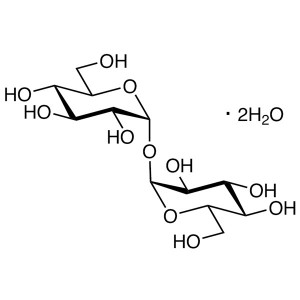
D-(+)-Trehalose Dihydrate CAS 6138-23-4 Assay >...
-
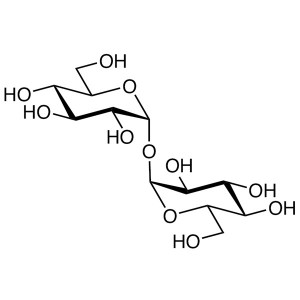
D-(+)-Trehalose Anhydrous CAS 99-20-7 Assay >99...
-
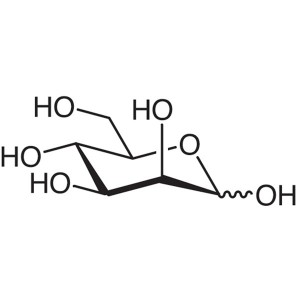
D-(+)-Mannose CAS 3458-28-4 Assay >99.0% (HPLC)...
-
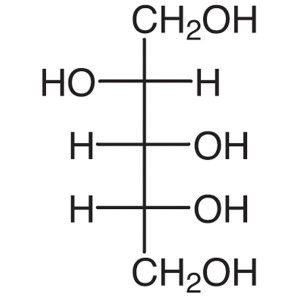
D-(+)-Arabitol CAS 488-82-4 Assay >99.0% (HPLC)...
-
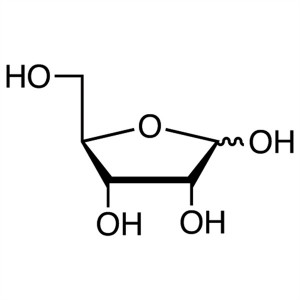
D-(-)-Ribose CAS 50-69-1 Assay 97.0~102.0% Fact...
-
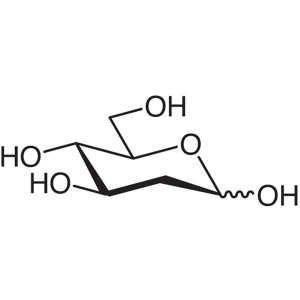
2-Deoxy-D-Glucose CAS 154-17-6 Assay >98.5% (HP...
-
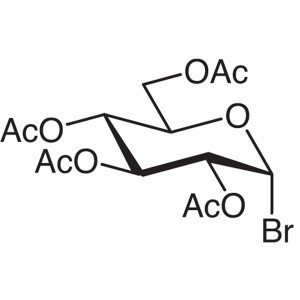
Acetobromo-α-D-Glucose CAS 572-09-8 Purity >99....
-
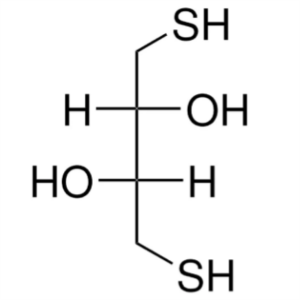
DL-Dithiothreitol (DTT) CAS 3483-12-3 Assay >98...
-
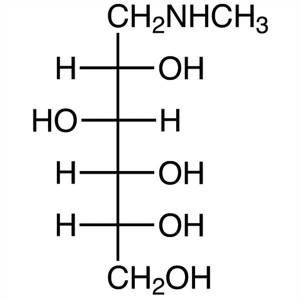
N-Methyl-D-Glucamine (Meglumine) CAS 6284-40-8 ...
-
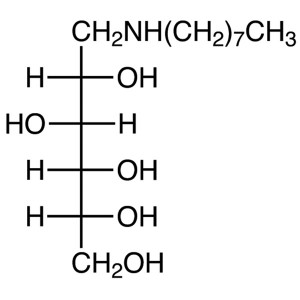
N-Octyl-D-Glucamine CAS 23323-37-7 Purity >98.0...
-
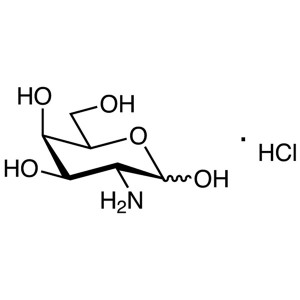
D-(+)-Galactosamine Hydrochloride CAS 1772-03-8...
-
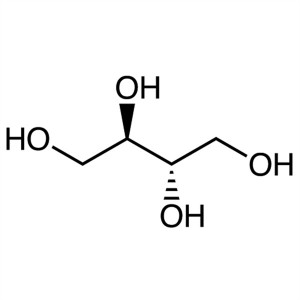
meso-Erythritol CAS 149-32-6 Assay 99.5~100.5% ...
-
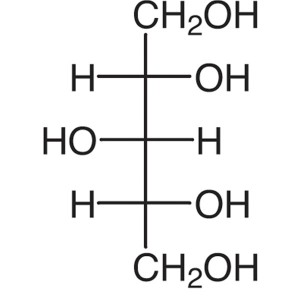
Xylitol CAS 87-99-0 Assay 98.5~101.0% Factory H...
-
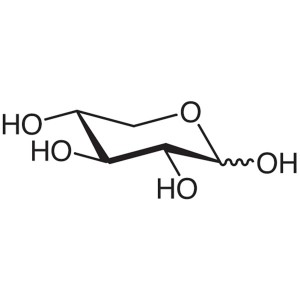
D-(+)-Xylose CAS 58-86-6 Purity >99.5% (HPLC) F...
-
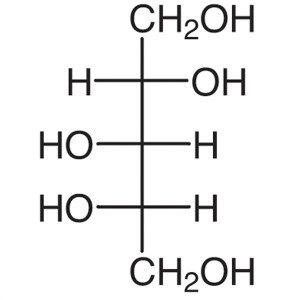
L-(-)-Arabitol CAS 7643-75-6 Assay >99.0% (HPLC...
-
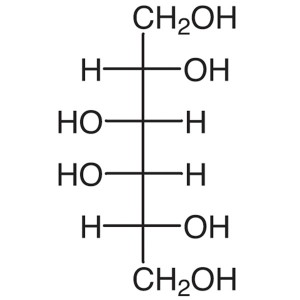
Dulcitol (Galactitol) CAS 608-66-2 Assay ≥99.5%...

